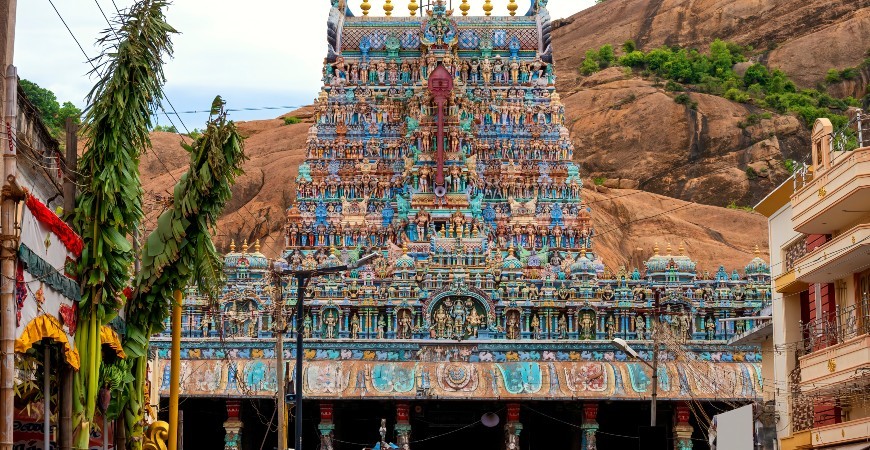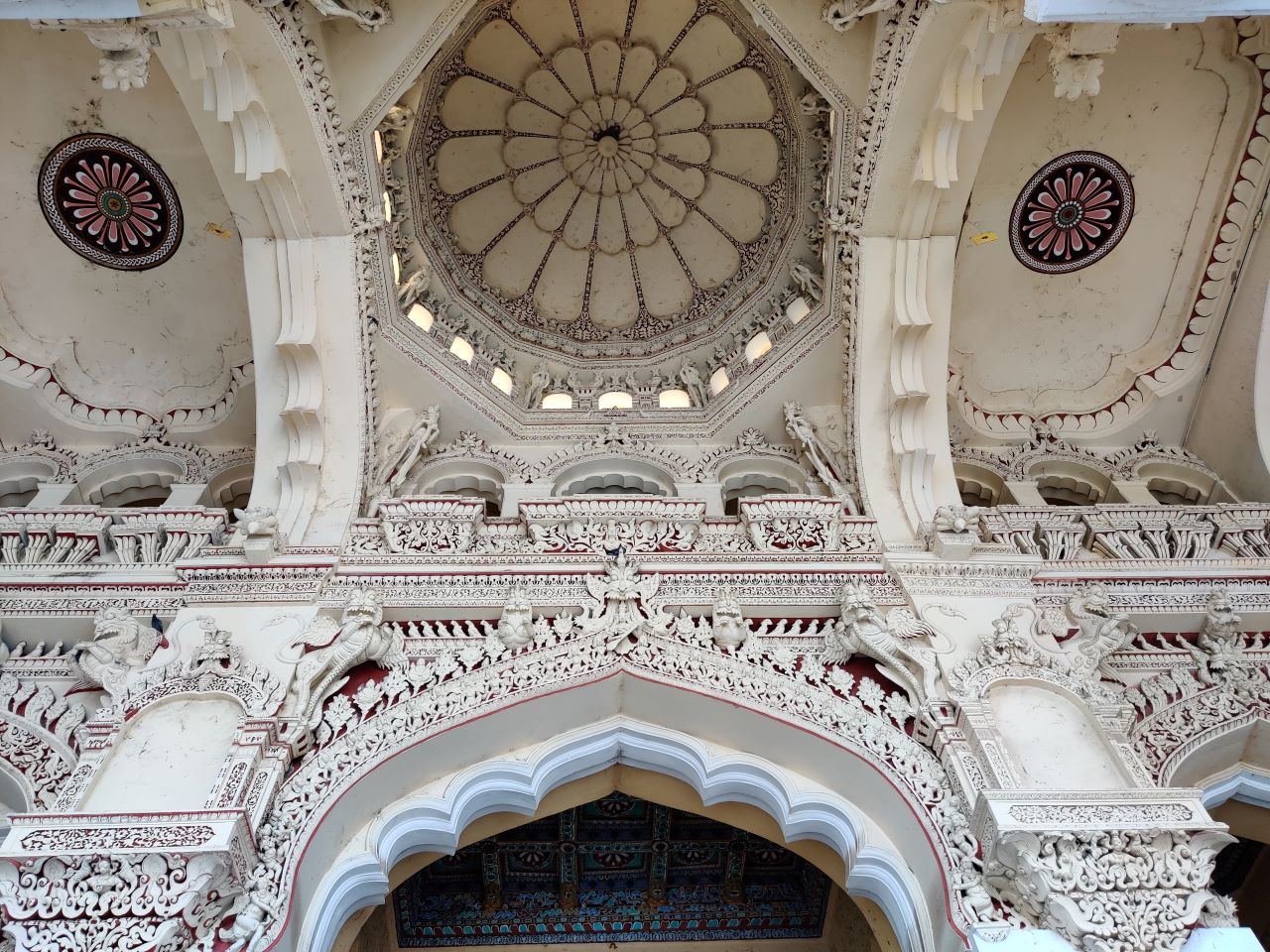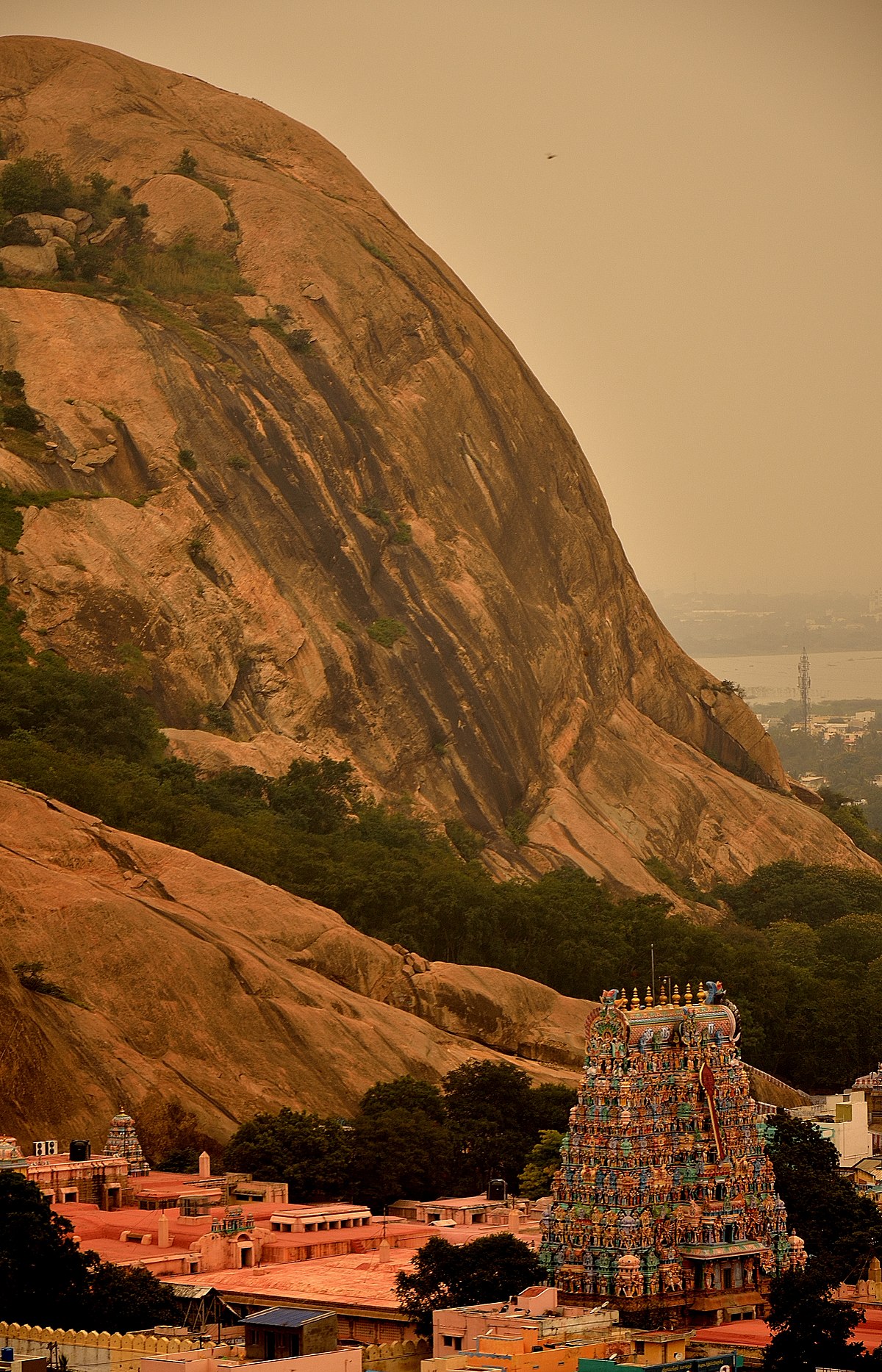


Thiruparamkundram Murugan Temple
This
Temple is dedicated to the Murugan which
is another name of Kartikeya. The temple is built in rock-cut architecture and
believed to have been built by the Pandyas during
the 6th century. According to the legend, it is where Murugan killed the
demon Sura-padman and married Devasena also
known as Deivayanai, the daughter of the
king of heavens, Indra.
The temple is
located 8 kms from Madurai City. In the main shrine, apart from Murugan,
the deities Shiva, Vishnu, Vinayaka and Durga are housed. The temple follows Shaiva tradition of worship. Six daily
rituals and three yearly festivals are held at the temple, of which the Kantha
Sashti festival during October - November is the most prominent one.
Thiruparamkundram
finds mention in the Skanda
Puran detailing
the killing of Sura-Padman by Murugan. As per Hindu legend, the demon
king Sura-padaman, once obtained boons from the god Shiva on account of
severe Tapasya. He
started ruling the 1008 worlds on account of the power attained. He had several
sons. He started troubling the devas . He imprisoned Indra the king of the gods. Indra sought the help of Shiva's
son and the god of war Murugan. Murugan sent his messenger to the demon, but he
remained unmoved. A severe battle was fought in Thiruparamkundram where Murugan
killed all the sons of the Sura-padman except Iraniyan. Sura-padman hid under
the sea. Murugan split him into two pieces, which went on to become the god's
divine vehicles, peacock and rooster. The day when Murugan slayed Sura-padman
is celebrated as Skanda Sashti festival in all the Murugan temples.
In gratitude,
Indra married his daughter Deivayanai to Murugan at
Thiruparamkundram. A treatise of the divine marriage, Kanthar Anoobothi, records that
Murugan asked all the divine angels and gods who attended the marriage to fly
back to heaven in their own vehicles with Mano vegham ie speed of thought.
The temple is
built rock-cut architecture dating back to the Pandya period of 6th century and
the life sized sculptures in the mandapas
of the Nayaka period during the 16th
century. An Aasthaana
Mandapa with several artistically carved pillars lead one to the towering 150
feet high seven-tiered raja gopuram at the entrance. The granite hill
behind the temple is 1,050 ft which has a shrine of Kasi Viswanatha at the
top. The image of Vinayaka in the temple holds sugarcane
and fruits. The inner rock cut image is made from a single stone.
A notable
feature of this temple is that the Shiva and Vishnu face each other in the main
shrine, considered a rare thing in ancient Hindu temples. In front of the Dhwaja-sthambam, the flag staff, there is a carved Nandi ,
peacock and mouse, the vehicles of Shiva, Murugan and Vinayaka.








